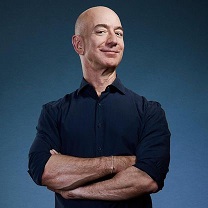Written for Siachen.com by Raj Narayan Nyayapathi,
Resident of Hyderabad, Telangana State.
Post last updated on 16-Aug-20
The world was preparing to usher in 2020, unaware of the pain and trauma it would be experiencing in the months to come. What is happening now is a lifestyle that humanity had forgotten and is not willing to accept.
On December 31st, 2019, the World Health Organization ( WHO), China, gave an account of a cluster of pneumonia cases. The report provided details about a previously-unknown virus in Wuhan in Eastern China.
Table of Contents
What is Covid-19, and what is its history?
Coronaviruses are an assemblage of viruses that can cause disease in both humans and animals. One example of the virus is the SARS-CoV (Severe Acute Respiratory Syndrome) virus strain that had attacked in 2002-03. Here too, the first detection was in Southern China and went on to affect around 26 countries resulting in more than 8000 cases and 774 deaths.
There was a second attack, termed as MERS-CoV (Middle East respiratory syndrome corona virus) in 2012. Saudi Arabia reported the first case of MERS-CoV. It created 2279 infections in 27 countries resulting in over 800 deaths.
A similar acute respiratory disease, the third virus in this century, caused by a novel coronavirus is the now prevailing 2019-nCoV or SARS-CoV-2. On February 11th, HO named the disease as COVID-19. Exactly a month later, after its rapid spread, the corona virus has been declared as a pandemic.
The initial response:
Many governments did not take the virus seriously, presuming it to be an epidemic restricted to China. But that was not to be. Within four months, the disease has turned into a global tragedy. The USA, Russia, Brazil, the UK, Spain, Italy, India, and many more countries are among the worst affected.
On January 30th, 2020, WHO pronounced the COVID-19 epidemic as a public health emergency of international concern (PHEIC) but was hesitant to term it as a pandemic. Its director-general Tedros Adhanom Ghebreyesus said, “ Pandemic is not a word to use lightly or carelessly. It is a word that, if misused, can cause unreasonable fear, or unjustified acceptance that the fight is over leading to unnecessary suffering and death.”
The situation is grim and terrifying, with nearly 5.92 million confirmed cases and more than 3.6 lakh deaths as of 31st May’20. Figures are increasing each day alarmingly. Barring loss of lives, the pandemic has resulted in an unforeseen and unparalleled slump in the global economy. The GDP of most economies is going into negative and creating large-scale unemployment. It may take years before the countries gather themselves up towards normalcy.
In India:
The scene in India is no different. Several chief ministers brushed aside the disease as an infection that people can prevent by taking paracetamol, a medication for pain and fever.
The pandemic showed its true colors with Kerala reporting the first positive case in India on January 30th. The patient is a girl student studying at Wuhan University and reached Kolkata on January 23th. From there, she flew to Kochi and went to her hometown in Thrissur. The girl was responsible enough to report to the health center nearest to her village. The officials asked her to stay at home for 28 days wearing a mask and isolating herself. The patient was admitted to the Thrissur General Hospital on January 27th after she had contacted the health officials complaining of flu symptoms.
Within a couple of days, reports came of two more positive cases in Kerala. Both the patients were returning from Wuhan. After a few weeks, the Health Ministry confirmed two new cases in Delhi and Hyderabad. They also had a travel history to Italy and UAE respectively. Meanwhile, an Italian holidaying at Jaipur also tested positive for the virus. People who came in contact with the patients also showed symptoms, thereby multiplying the spread of infection.
It has turned into a challenging task for the government considering the vast population and size of the country, particularly in the densely populated regions. They had to track and monitor
- People who have recent international travel history and their movements within the country after their return
- Carry out contact tracing by identifying and testing individuals with whom the above persons had come in contact on return
- Test and quarantine foreigners who were in India on business or holiday.
Lockdown was inevitable. While the lockdowns did help in slowing the spread of the disease, some more stringent measures could, maybe, have brought the figures down. It includes- the Tablighi Jamaat prayer meet, proper planning of shelter and food for the migrants, relief measures, safety PPE kits for health workers, etc.
As on date, with nearly 1.73 lakh confirmed cases and over 4,500 deaths, the condition is unpredictable. The lockdown is not likely to be extended in most of the states. Will there be a second wave of attack, and is the country equipped to handle it? It is a wait and see attitude.
How did Covid-19 start?
The exact causes of the outbreak of the disease are still uncertain. However, as mentioned earlier, it appears to have originated from the Wuhan seafood market. The marketplace activities included stocking and trading of scores of birds, marmots, bats, rabbits, cockroaches, snakes, and similar.
The vendors in the market could have carried the first infections since they are in direct contact with birds and animals. There is again a difference of opinion on the source. Some virologists at the Wuhan Institute of Virology blame the bats. They state that the generic coronavirus structure is about 96% similar to that found in bats. But a report published on the March 26th contradicts the claims. The study says the coronavirus structure in pangolins was about 88.5 to 92.4 percent like that of human beings.
Symptoms of Covid-19:
The main symptoms of Covid-19 are fever and dry cough. Breathlessness, sore throat, diarrhea, headache, muscle pains, chills, loss of taste/smell, etc. are some fewer indications. However, it is not necessary to find all the flu or cold symptoms in the Covid-19 infection.
It is necessary to seek immediate medical treatment when an individual has
- difficulty in breathing,
- persistent pain in the chest,
- lips or face goes bluish,
- difficulty in staying awake or unable to wake.
The Government of India recommends its citizens to download the Arogya Setu app to know about the risks, best practices, etc. Self-quarantine may be necessary if the person has interacted or lives with a patient who has tested positive.
Medical experts advise individuals with high temperatures or a new incessant cough to isolate and stay home for 14 days. WHO says the symptoms are likely to appear about five to six days after exposure to the virus.
How it spreads:
China had shut down the Wuhan market for inspection and cleaning in January. Unfortunately, it was a little late as the virus had begun to spread outside the Wuhan market. Many of the medical personnel, including doctors and nurses, caught the infection.
Although China was severely affected by Covid-19 in the first two months, the infection took an amazing downward slide by mid-March. In February, in one day, nearly 5,000 cases were reported. But, on March 17th, reports on new cases was as low as 39. It appears, most of the new cases were because of people coming in from other countries.
While China has been effective in controlling the spread quickly, it was terrible news in the rest of the world. Most of Europe and America bore the brunt. The USA tops the list. Was the government there slow in reaching out with testing and safety equipment? Russia, Brazil, the UK, Spain, Italy, France, Germany, India, and others follow the USA in that order. Undoubtedly, this is one race nobody wants to win.
Is the Wuhan Sea Market Actually Responsible For Covid-19? Other Possibilities
The assumptions of Covid-19 emerging in the Wuhan wet markets can be wrong. Instead, the market might have been a super spreader site with one infected person transmitting it to many other people. The origins of the pandemic gain importance because of accusations of the USA and other nations that China has been hiding the real facts.
The coronavirus pandemic continues to haunt humankind. It is nearly six months ago that the first warnings about the invisible virus were heard. But it is still uncertain how, where, and when it all started. Over the past six months, there have been allegations and counter-allegations on this subject, with different logic and reasonings, but none proven yet.
The world believes someone in the Huanan seafood market in China first got coronavirus infection from an animal. Now, the health experts working on the pandemic think otherwise.
Scientists in various capacities are striving to find the source and animals which passed on the infection to human beings. The unsubstantiated allegations of US President Donald Trump add to the uncertainty.
Trump’s theory
In April, President Trump claimed he had evidence the coronavirus has escaped from a lab in Wuhan. He threatened sanctions on China for being the source of the global pandemic. When asked to elaborate, he had responded, “I can’t tell you that. I’m not allowed to tell you that.” He lambasted the World Health Organization(WHO) for shielding and behaving as China’s public relations agency. The President went a step further, calling it a “Chinese Virus.”
China did not keep quiet. Its embassy in France retaliated, suggesting that the pandemic outbreak originated in the US. The embassy reeled out a string of tweets accusing the USA of trying to pass off pneumonia as flu. But the embassy did not have any evidence for its charges.
However, the Office of the Director of National Intelligence, the head of the Spy Agencies and Intelligence Community, negated the statement. The Intelligence community agrees with the “ wide scientific consensus” that the Covid-19 virus was not human-created or genetically modified.
The WHO also reiterated its belief of the coronavirus being natural in origin. Even the Secretary of State Mike Pompeo indicated he had no seen any concrete evidence. China, too, denied the allegations of Donald Trump.
Possibility of an accidental leak
The probabilities of an unintentional leakage cannot be ruled out until proven. As the damages caused by the virus is now a global concern, people are scrutinizing the public-health laboratories in Wuhan with an eye of suspicion.
The WIV Research
Investigations at the Wuhan Institute of Virology (WIV) have made scientists assume the coronavirus did not originate in Wuhan wet market. Although it still requires validation, they feel the virus originated elsewhere.
Rather, the animal market can be the super spreader site where one infected person spread the virus to many other people. They say bats might be the root cause of the infection. But there could be an intermediary animal that carried the virus from bats to human beings.
Research on bats has been ongoing seriously since 2003, after the SARS epidemic. Over 80% of the fatal cases during the virus attack were in China. The cause of the virus was later traced to a palm civet that was infected by a bat.
Bats are dominant in the caves in the Yunnan province in southwest China. Virologists have been making trips to the caves to collect viruses from different bat species and have built the largest virus bank in Asia at Wuhan.
Through persistent researches on the bats, they could find a wide variety of SARS-like Virus in bats, some of which might affect human health.
While sequencing the genome of the coronavirus in January, the virologists found it 96% similar to the bat virus sample. The initial conclusion of bats being responsible for the coronavirus infection made sense.
As soon as the first cluster of cases was reported, the Wuhan wet market was closed down. Lockdown was imposed in Wuhan and other cities of Hubei in the third week of January. During that time, the Huanan seafood market was cleared and disinfected. All the wild animals were killed and destroyed.
Can pangolins be the intermediary host?
The scientists continued researching and published a paper in Nature in the second half of March (https://www.nature.com/articles/s41586-020-2169-0). They claimed the coronavirus genomes were 88 to 92 percent similar to SARS CoV-2 in wild pangolins. It is a possibility pangolins could be the intermediary host. But since there is no substantial evidence, conclusions cannot be drawn.
Pangolins are among the most unlawfully trafficked animals in the world. The mammal has value because of its meat and other medicinal properties. As per the Nature report, the catalog of items on sale in the Wuhan market does not mention Pangolin. It is alleged the animal is poached and smuggled from neighboring countries.
The Harvard Medical School issued a report on June 9th, 2020, suggesting the coronavirus might have been spreading in China from as early as August 2019 ( https://dash.harvard.edu/handle/1/42669767). The research is based on satellite images of hospital travel patterns and search engine data. China dismissed the report as “ridiculous.”
To summarize, though there are various theories on the origin of the coronavirus, there is no confirmed theory till date. One aspect is very clear though. The virus originated in China, and that country, along with WHO, failed to alert the rest of the world of the possibility of a global outbreak. The lapse has cost the world rather dearly, both in terms of human lives and economic downslide.
Did the Global Leaders Fumble in Their Response to the Covid -19 Pandemic
Everyone knows the first outbreak of coronavirus happened in Wuhan, China, in December. There was a possibility of containing the COVID-19 disease. That chance is now gone. How seriously did the world leaders take it? Could the virus have been handled in a better way, and many more lives saved? Were the politicians and world leaders struggling in quick and effective decision-making? It looks so at least on paper.
People infected by the novel coronavirus have crossed a whopping nine million, resulting in more than 4.91 lakh deaths. But the US President Donald Trump, for one, seems to be looking for excuses with his persisting attacks on China. At an election rally in Tulsa, Oklahoma, he gave the pandemic a new name, “Kung Flu.” He went on to add that Covid-19 has more names than any other disease in history. He quoted:
“ I can name – Kung flu. I can name 19 different versions of names. Many call it a virus, which it is. Many call it a flu. What difference. I think we have 19 or 20 versions of the name,” said Trump, playing around the term “Kung Fu,” a Chinese martial arts practice.
China immediately voiced its protest. Its foreign ministry spokesman warned against using words that link the origins of the virus to any country. As though the world doesn’t know.
The USA leads in numbers and is the worst affected nation followed by Brazil, Russia, and India. While the figures are overwhelming the health workers, it also raises questions about the administration’s abilities in a country. Many leaders are coming under fierce criticism for their handling the crisis while a few have seen their popularity increase with their assertive leadership.
The USA
In the second fortnight of January, within eight days, the US intelligence community gave President Trump two briefings. The first was to warn of a possible pandemic that may not be fatal for most people. In the second briefing, the community informed though there were no deaths until then, the disease had spread outside China. The community also alleged that China was hiding some critical information about the virus.
On January 20, the United States and South Korea reported their first confirmed coronavirus case. South Korea immediately ordered its medical companies to start mass production of test kits. Trump should have done something similar, cautioned the public to take precautions, and get the health care centers ready. But he did not.
It was, only when WHO declared the coronavirus as a public health emergency of international concern (PHEIC), did the president announce travel restrictions for foreigners coming from China.
When reports of the first case came, in an interview, Trump underplayed the seriousness of the issue and insisted everything was under control. By then, the virus had already spread to four other countries. China also had announced the lockdown in Wuhan.
Trump was busy blaming China, foreigners coming into the USA, and the Obama administration. He went on to say the coronavirus was a seasonal flu that would go away as the weather grew warm.
Boasting on his smartness in one of his briefings, he suggested injecting disinfectants into the human body could help fight coronavirus. Trump later covered up his gaffe by saying it was sarcasm! Earlier, his obsession with hydroxychloroquine was evident when he did not allow Anthony Fauci from replying to a question about the effectiveness of the drug for the virus. Saving further embarrassment, the FDA emphasized that currently, there is no approved drug for COVID-19.
Brazil
With figures of more than 1,150,000 cases, Brazil is the second-most coronavirus infected country. The country’s president Jair Bolsonaro has been as uncaring and casual as Donald Trump has been. It is surprising how a leader can be so ill-informed about the gravity of the situation. He started a “Brazil can’t stop” campaign in social media to persuade people not to stop work because of the virus threat. However, a federal judge soon banned the campaigns on social media.
Bolsonaro still is downplaying the seriousness of the virus despite the death toll crossing 52,000. Lockdowns have not been able to control the spread. Besides the president’s careless attitude, lack of infrastructure in the countryside, and shortage of professional healthcare workers are a few concerns. More disturbing is the news from the WHO Director-General for Emergency Michael Ryan. He warns the Covid-19 is yet to peak in Latin America and more cases and deaths in the next few weeks (https://brazilian.report/coronavirus-brazil-live-blog/.)
United Kingdom (UK)
The first confirmed Covid-19 cases in the UK reported on Jan 31, were of two members of a family. It is alleged the government was late in responding to the crisis. While the rest of Europe was closing and ensuring strict lockdown, everything in Britain was open- schools, restaurants, clubs, theaters, and shops. Health officials advised people with flu-like symptoms and the elders above 70 to stay at home.
The thinking among the British scientists was to follow the controversial “herd immunity” path. They felt the best way to control the virus was to let it spread naturally to build up the population’s herd immunity. While people may develop resistance, they will at least not pass on the virus to others. The government soon backtracked, realizing that such moves will be successful only at the cost of several lives.
Herd immunity has been tried before but only for known diseases like influenza and not for some invisible and unpredictable viruses. It was clear that Johnson, like many other global leaders, did not take the Covid-19 pandemic as seriously as he should have.
There was confusion for some time, and people felt that the government was purposely wanting at least 60 % of the population to fall sick. The UK health secretary Matt Hancock clarified, “Herd Immunity is not our goal or policy.” It is not mentioned in the action plan (https://www.gov.uk/government/publications/coronavirus-action-plan/coronavirus-action-plan-a-guide-to-what-you-can-expect-across-the-uk).
The government delayed in announcing its new strategies and measures they planned to take to curb the fast-spreading pandemic. It was only on March 23 that the government declared a complete lockdown. Moving out of the house was banned except for the purchase of essential goods. Non-essential stores, places of worship, gyms, libraries, playgrounds, and similar were closed down till further notice. People were told to maintain two-meter distancing and wear face coverings. The government arranged special planes to Wuhan for the immediate evacuation of its citizens there.
The cases reached nearly 20,000 by the last week of March, and among those infected included Prime Minister Boris Johnson himself. He admitted he had been shaking hands with people wherever he went, including patients in hospitals. Many of his team and high-profile officials had to go into isolation after being infected with the virus.
As the government prepares to relax some of the rules, health officials are wary of a possible second wave.
Russia
Unlike in other countries of Europe and Asia, the outbreak of Covid-19 was late in Russia. The first Russian, identified with the virus, was abroad the Diamond Princess cruise liner. Russia did not report any cases within the country in February. But there was a surge with the number of active instances jumping from 495 in the second fortnight of March to more than 10,000 by April 10. Mid-March, the country banned the entry of foreign nationals, and an emergency-like situation was declared on March 31. A national holiday was declared and extended as the cases grew worse.
Italy
The first two cases in Italy was identified on January 29, 2020. Giuseppe Conte, the country’s prime minister, immediately declared a state of emergency and banned all flights from China. Liquor shops and bars were first closed, and after a few days, the government ordered the complete closure of all shops. However, by then, the damage was done, and the virus spread to all vulnerable sections of the Italian population.
Italy was among the first European countries to be hit and had its share of mistakes, which many other leaders without realizing, followed. For instance, the mayor of Milan brushed aside the seriousness of the virus with “ Milan doesn’t stop.” It is said Bolsonaro echoed this call with “Brazil doesn’t stop.” Italy also declared a national lockdown only when it became evident people were ignoring calls to avoid unnecessary travel and social distancing.
India
The country has surpassed many others and stands fourth as the worst-hit nations behind the USA, Brazil, and Russia, a rank the country never wanted. Prime Minister Narendra Modi announced the first lockdown, giving the people barely four hours’ notice. But how far the lockdowns have been effective is debatable. Some of the reasons for the spread include lack of discipline among people, unhygienic conditions at hospitals, inconsistency in testing, lack of kits, and facilities for the healthcare workers. The migrant worker crisis should have been better planned before imposing the lockdown. Clearly, this was an unanticipated situation that grew to alarming proportions.
The infection and death numbers are increasing at a frightening pace. After four lockdowns, the Government has eased many of the restrictions and has more lined up to open in a phased manner. It also left the decision of extension of lockdowns to the respective chief ministers of the States.
Different Approaches To One Common Goal of Combating Covid-19
Coronavirus is almost everywhere, devastating the world causing deaths and economic disasters. Every country, be it in Europe, the Americas, Africa, Asia, India are reeling under financial crisis after the virus-triggered lockdowns. Most countries delayed in action and are struggling against the pandemic. Several countries fought the virus sensibly with the right moves and strategies. Though the success stories are much lower in number among the nations, they give a ray of hope and confidence.
Unlike in the Americas and Europe, the approach to the pandemic has been different in some countries. Leaders acted instantly, took firm decisions, and could garner results quickly. The public trusted their leaders and showed the confidence of wading through the crisis positively.
New Zealand
Although New Zealand identified its first coronavirus case at the end of February and soon crossed the 100 figure, the country did not panic. Prime minister Jacinda Ardern as usual, was quick and firm with her prudent decisions.
Her message to the country was, “We must go hard, and we must go early.” The nation closed its borders to foreign travelers and asked the people who returned from other countries to home quarantine for 14 days.
On March 25, the country went into full lockdown with strict measures, the same day as India shut down. Only essentials grocery stores, gas stations, pharmacies, hospitals were allowed to be open. Social interactions were limited to households, and restrictions put on vehicular movements.
Ardern made her plans clear to the residents by sending emergency text messages. It read, “ This is a message for all of New Zealand. We are depending on you”. “Where you stay tonight is where you must stay from now on… it is likely (the strictest) measures will stay in place for a number of weeks.” In another briefing on April 16, she said, “ We have the opportunity to do something no other country has achieved: elimination of the virus.”
Ardern was in touch with the people through daily press conferences, which helped build trust and confidence. “The lockdown rules were vital as they suppressed the spread of the virus and bought precious time that other countries wasted, ” opined Oksana Pyzik, a senior teaching fellow at University College London’s School of Pharmacy.
The prime minister made the first victory announcement on April 27, “ There is no widespread undetected community transmission in New Zealand,” Ardern declared. “We have won the battle.” The country began its first phase of relaxation of lockdown restrictions moving to Level Three. She coaxed the citizens to be alert and added there is no certainty when the pandemic will end and total normalcy return.
Finally, on June 8, an overjoyed Jacinda Ardern declared the country is virus-free after the last known infected person had recovered, and there were no new cases for 17 consecutive days.
All restrictions came to an end, and the residents no longer have to social distance. Normalcy returns with the permission of hugs and handshakes. International travel was still banned, except for citizens returning home, compassionate, and business grounds with compulsory 14 days quarantine on arrival.
Did the celebrations start too soon? It looks so. Two women traveling from London tested positive on landing in Auckland. They were allowed to go from Auckland to Wellington to meet a sick relative during the quarantine period, and that proved to be a costly lapse. It seems several individuals were allowed to move around during the quarantine period without proper testing. Most cases that are coming nowadays are from people returning from other countries. It is over two and a half months since the last occurrence of Covid-19 was “acquired locally from an unknown source.”
Singapore
The story of Singapore should be an eye-opener for everyone. The country had everything under control by March itself when the world was at the mercy of the pandemic. But the virus bounced back hard, finding a vulnerability in the migrant workers. Singapore had to backtrack and introduce tighter restrictions.
It was sometime in the last week of January, Singapore identified its first case of coronavirus. People panicked and started stocking food, recollecting the horrid SARS pandemic of 2003 that resulted in 33 deaths.
Prime minister Lee Hsien Loong called out urging the people to stay calm, not hoard food, or face masks. He asked them not to believe or spread rumors, discard fear, and stay together to fight the unknown mysterious disease.
Singapore had been planning strategies leaving nothing to chance. Health officials tested everyone who complained of pneumonia and influenza-like symptoms and admitted those who tested positive in the hospital. The primary objective was to do contact tracing and stop the spread. With such vigorous follow-ups, Singapore could manage to control the virus for some time without complete lockdown.
The country received praise from the WHO chief Tedros Adhanom Ghebreyesus for its “all-government approach” in the containment of the pandemic. However, the epidemic proved to be mightier and hit the country hard in its most vulnerable area. Singapore has about 1 million foreign workers, and more than three lacs of them stay in dormitories. They work in manual labor as attendants for the sick and aged, construction workers, hospitals, manufacturing units, and similar. The dorms are congested, small, and not so clean hygienically.
The prime minister imposed a lockdown on April 7 as the number of cases increased. The disease increased from three in March-end to over 17,000 in April and included residents who were returning from abroad. Singapore is facing its worst recession in two decades. The country is cautious in relaxing its restrictions again and is in the phase-two stage of its three-phase safe reopening.
Japan
The Japanese saga with coronavirus has been different in many ways from that of the rest of the world. While some appreciated the policies it adopted in restricting the pandemic, others accused it of dismissing the Covid-19 threat for the sake of hosting the summer Olympics.
Japan identified its first case of the disease in a person returning from Wuhan in mid-January. The country has all the factors that have made the virus spread quickly across a city. It has close ties with China, where the pandemic originated. The cities are large and densely populated. People live in small apartments and travel in high-traffic trains.
Consider other factors. Japan, like Italy, has the oldest average age and is just as susceptible. It also has a high rate of male smokers. Smoking is one reason for the deaths recorded in China as people with damaged lungs are vulnerable to pneumonia. Japan also did not do any rigorous testing ignoring WHO’s advice. With almost similar vulnerabilities and much lower safeguards, Japan managing of such low infections and deaths is a mystery.
One reason that the detractors point out is the low testing. The health authorities tested only those with visible symptoms and those who had direct contact with infected patients. They alleged Japan wanted to keep the figures low so that it could host the Olympics as planned. The number of cases has spiked after the IOC decided to postpone the games to summer 2021. The government, however, denied any connection between Olympic postponement and the increase in confirmed coronavirus infections.
Prime minister Shinzo Abe ordered lockdown and state of emergency only on April 7, which also was not as severe as in many other countries. The request was clear and unpretentious- avoid unnecessary travel, observe social distancing, and work from home. The country was also not strict with its travel restrictions. It asked the people returning from overseas to self-quarantine for 14 days.
The second perspective sounds logical. The disease has not spread in Japan as quickly as it did in other countries because of pre-existing hygiene and obedience habits. People here are accustomed to wearing masks, greet by bowing, and avoid the physical touch of hugging or shaking hands. The public willingly goes into self-isolation when they are sick. The world could learn something of discipline from the Japanese.
Another theory, suggested by some health specialists, is something to ponder. Many Japanese have some kind of immunity since a Covid-19 type virus has previously infected them. However, other scientists dismiss the theory, saying one cannot restrict the virus to one region. They think Japan has been successful because it did not allow the infection to spread. Besides social distancing, the country has efficiency in tracking and tracing based on the previous handling of epidemics.
Sweden
The Swedish government faced severe criticism for its indifferent and lenient approach towards the coronavirus crisis. It was not that Sweden did not have any cases or deaths. Though the first confirmed case was on February 15, the virus spread fast and rose to over 1,000 cases with three fatalities within a month. The figures were scary. The government intensified its testing as the numbers shot up. In mid-June, on an average, over 1,800 positive cases were being reported each day. Surprisingly, the figures dropped remarkably to less than five cases by the first week of July.
Right from the beginning, Sweden never went into full lockdown despite increasing infection. While the world was following China’s footsteps of lockdown, Sweden was educating its citizens on the need for social distancing. People led, almost normal, routine life even during the lockdown.
Primary schools, cinemas, restaurants, public transport, libraries, were operating like in regular times. The other advice was to avoid unnecessary travel and, if possible, work from home. There were a few restrictions. Gatherings of more than 50 people were banned. High schools and universities conducted classes online. Restaurants were asked to ensure a two-meter distance between tables. Liquor was served only on tables and not across counters.
In Sweden, politicians do not have much say in administrative matters. They have no authority to dictate to the governmental agencies. The country was in no mood for lockdown, and Prime Minister Stefan Lofven understood it well. He had the confidence the citizens would obey the rules set by the authorities. The government was firm in its belief that herd immunity is the only way to defeat the virus in the long run.
Another factor is the excellent health of the population. The healthcare system is efficient and particular about hygiene in the country. The government is expecting and ready for a second wave, of the virus, in case it peaks again as it happened in many countries.
South Korea:
Although among the first countries to get the coronavirus infections, South Korea did exceptionally well to control the spread with strategic moves. A Chinese woman, traveling from Wuhan, developed symptoms upon landing at Seoul airport on January 20. South Korea was the third country to report coronavirus after Thailand and Japan, confirming its spread outside China.
The government set up an emergency response committee to monitor the cases. In the initial days, the number of cases was low. However, on February 19, the disastrous cluster in Daegu was detected. The super spreader, known as patient 31, traveled to many places attending social events before being identified. The country reported a peak of more than 900 cases in a day by the end of February.
The ministry of health and the Korean Center for Disease Control and Prevention acted quickly even before the first case was confirmed. They had asked private organizations to mass-produce test kits, and institutions were selected to run diagnostic tests. On average, the institutions were ready to do 15,000 tests each day.
The health agencies also set up screening clinics outside the entrances of hospitals to prevent infected persons from entering. People who showed symptoms were tested immediately and asked to self-quarantine and stay at home until the reports were ready. The screen centers were phone booth style, which ensured the health care workers did not have direct contact with the patients.
By March-end, the country had completed over 3,00,000 tests much more than any other country. South Korea also was prepared with temporary isolation wards. They made use of the public facilities and private corporate retreat centers to overcome bed shortage in hospitals.
The country also proved its efficiency in contact tracing using a network of contact tracers. Health workers were given access to important data to help with contact tracing. They hired private epidemiologists and provided training to new staff to support the health workers.
South Korea is now fighting a second wave of attack, with the virus spreading to many major cities. The new cases are predominantly either local transmissions or international arrivals. Authorities believe the sudden increase in the infection in the densely-crowded Seoul was due to a holiday in May.
Developing Conclusion;
It is nearing six months, and the coronavirus cases are likely to cross the ten million mark soon. The first 1 million cases took three months, but the pandemic has infected the last one million cases in just eight days.
It is heartening that most Western Europe and South East Asia countries seem to have got control of the situation and are returning to near normalcy, with the graphs showing a downward turn. WHO reports that nearly 50% of the new cases are from the USA, Brazil, Russia, and India.
It appears a foregone conclusion that the seriousness world leaders did not foresee the seriousness of the pandemic. They were apparently influenced by the soft-pedaling of the epidemic by WHO. But then, each country has its reservoir of experts who should have been consulted by the respective governments, and preventive, timely measures taken. It could have saved several global economies and millions of lives.
Some countries have taken the cue from their previous battles with SARS-CoV and MERS-CoV and set up a defense strategy. Minor slip-ups brought the fight back to the square one. However, these countries did deserve a special mention because of the efficient measures the respective governments took, and the trust people have in their leaders.
India’s Fight Against Coronavirus
Post updated on 16-Aug-20
The number of cases has crossed 21lakh, and it was only on the July 21 India had reported 10 lakh cases. It meant more than 11 lakh new cases in twenty days with 62,000 new cases on 08-Aug-20. The consoling factor, India’s Covid-19 mortality rate at 2.01 %, is among the lowest in the world.
Bloomberg’s Coronavirus tracker reports say the growth of the pandemic is fastest in India at present. The country is behind the United States of America and Brazil in terms of global coronavirus infections. With its population of over 1.35 billion, India has a tough task in its struggle against the pandemic.
Since the first reporting of the coronavirus case at the end of January, India now has a whopping figure of over 21.50 lakh confirmed infections. More than 43, 000 people have died of Covid-19. The welcoming news is the number of recoveries is over 14.3 lakh patients. The latter figure includes those undergoing treatment and new infections. The figures are not relevant as the numbers are changing every minute.
Controversies of lockdown
Phase 3 (Lockdown 7)
Other than in the containment zones, the earlier restrictions have been relaxed in Unlock 3, although educational institutions, metro train services, cinema theaters, swimming pools, continue to be closed. Large gatherings are not allowed. The center has given authority to the state governments to evaluate the spread of the pandemic and frame policies accordingly. However, several states have decided to continue with the lockdown and travel restrictions.
The stringent months-long lockdowns in the country have helped improve the country’s fragile health system. Narendra Modi is leading the nation with determination and optimism in its battle against the pandemic. The government admits some decisions did not yield the results they were expecting.
Lockdown 1
On March 24, Prime Minister Modi announced immediate lockdown from that midnight for 21 days. The decision was taken on the World Health Organization’s advice and in consultation with various health experts, the chief ministers of the states and union territories.
Requesting people not to step out of their houses, he cited the “Laxman Rekha from the Ramayana” as an example. Modi cautioned the public not to unnecessarily venture out as it would endanger their lives and the lives of their family, friends, and the country.
Stressing on the need for social distancing, the Prime Minister felt there was a misconception that the healthy and youth were under low risk. They must understand by stepping out of their homes; they are likely to put other lives in danger. A single person can infect many others, and the situation would become unmanageable. Looking at the figures today, it seems as if his fears have come true.
Janata curfew
Before the lockdown, on Sunday March 22, India observed “Janata Curfew.” The Prime Minister’s call for shutdown to stop the spread of coronavirus received a good response. People, except for those working in essential services, stayed indoors from 7 AM to 9 PM. Shops, restaurants, street vendors, public transport and places of worship were all shut.
Prime Minister Modi also urged the people to follow social distancing. He emphasized there is no vaccine or cure for the pandemic as yet. The virus has exploded in the countries that ignored the need for social distancing and isolation. On the other hand, those who practiced the two fundamental norms have gained reasonable control over the coronavirus.
The PM also requested the public to gather in their home windows/ doorsteps at 5 PM and cheer the frontlines fighting the coronavirus through clapping or ringing bells. The nation obeyed and saluted the health warriors.
Lockdown 2, 3, and 4
Prime minister Narendra Modi started his address to the nation with an apology for the adverse impact and hardship the extension of lockdown was causing. Mr. Modi said there was no other way of stopping the rapid spread of the disease. The government announced free food and cash handouts to the poor.
The discipline and obedience that the public showed for Lockdown 1 were missing in the next two lockdowns. It was anticipated since the public had faced several problems as the announcement of lockdown was taken with less than four hours’ notice.
There were several cases of people defying the rules and congregating in protest. Hunger made people desperate to reach their homes and thus broke the lockdown rules. To ease the state exchequer burden, the center allowed the state governments to open liquor outlets with higher than regular prices. It caused resentment among the women in some quarters as families struggled with a financial crisis. Though it was compulsory to ensure social distancing and wearing masks, the safety protocols were ignored at several outlets endangering everyone.
In the fourth phase of the lockdown, the government approach had changed. By now, coronavirus had reached the interiors of almost all the states. Mr. Modi said a balance had to be found between “fighting coronavirus and moving forward.” Implementing lockdown without opening up any economic activities was not feasible.
How effective were the lockdowns?
The appeals and fears about the disease have reached the masses. People understand the necessity of wearing masks, sanitizing/ washing hands, and maintaining a physical distance. The figures seen each day are frightening, and the situation could have been worse, but for the timely lockdowns.
Although India decided at the same time as many other countries like New Zealand, Malaysia, and South Korea, the results are different. While these countries have managed to control the spread much better and are on the verge of normalcy, India is still struggling. The challenges are bigger in India, considering the federal structure of governance, the vast population, poverty, miscommunication, and infrastructure shortage.
The government invoked the provisions of the National Disaster Management Act (NDMA), 2005, while announcing the 21-day national lockdown in March for the first time. The Act’s guidelines allow only essential services that include food, utilities, law and order, and health care to function.
Though, as per the constitution, health, law, and order come under the purview of state governments, the center took them under its control to ensure uniformity in the implementation of the guidelines by ratifying this Act. As the NDMA chairperson, the Prime Minister gets a wide range of powers to deal with a disaster, in this case, the pandemic.
The migrant crisis
The most significant controversy of the lockdown has been the migrant issue. Many were also disappointed by the way the government handled it. With the lockdown came the suspension of all modes of transport- rail, road, and air till 15 April 2020. Instead of looking for a standardized solution for the stranded migrant labor, the center left the transport matter on the state governments.
The opposition and detractors ask why the government had not prepared the country about the impending danger and its lockdown plans? They allege the officials had assured the epidemic was not an emergency, but within a few days, PM Modi called for the Janata Curfew. A couple of days later, the Lockdown 1 for three weeks was announced.
It created panic among the people as they did not have much time to go back home. All modes of transport were closing in the next four hours. The government directed employers to pay full salaries to the workers during the lockdown period. But the question arises how would the small businesses with limited cash reserves pay the labor when they have no sales. The government also announced a double ration supply for those enrolled in the public distribution system but did not clarify about food supplies for the migrant labor without ration cards.
The migrants took to walking, cycling, hitchhiking, and similar, breaking all norms of safety as they ran out of existing supplies and cash. Accidents, exhaustion, and hunger took many lives for no fault of theirs.
The government’s announcement of food supply for 80 million Indians who did not have public distribution system support came only about 50 days later.
The government has different reasoning and insists lockdowns kept people indoors. Police were strict and violent, at times, to ensure the public obeyed the rules. They claim, if there were no lockdown, the disease would have galloped much faster and spread extensively into the society. Another fact is the lockdown gave the authorities time to build up new healthcare facilities and infrastructure needed to fight the virus.
Can lockdown increase infections?
Another argument is lockdowns restricted the resident movements. There are several localities throughout the country that are densely populated. One untested infected person can spread the disease like wildfire affecting the vulnerable people in that locality. Had the migrant laborer gone to their homes, the population in the region would have been lower. However, this is debatable. If the migrant himself were an infected person, the spread would have been the same but in a different city or village. Experts justifying the lockdown argue that it localizes the spread, i.e., since people cannot move freely, the infection cannot move freely and it takes different paths in different regions.
Non-Covid Patients
Several hospitals, nursing homes, and private practitioners temporarily closed or refused to see any new cases. They closed even though they can keep open during a lockdown. It seems the doctors were under pressure to sign an affidavit issued by the Chief Medical officers. The affidavit stated the doctors could be booked under the Epidemic Act if they violated the infection prevention protocol.
Private practitioners admit numerous non-Covid patients suffered because the doctors refused to take up their case. In some places, only emergency services were available. There are allegations that the government has diversified all its medical resources and infrastructure for Covid while neglecting the existing diseases that required regular medication such as diabetics, TB, Malaria, AIDS, and similar.
Misinformation
The social media platforms have facilitated ease in communication with the masses but are guilty of being a source of spreading rumors. These platforms have been misused to create panic and fear about the pandemic and promote racist and communal content. WHO Director-General Tedros noted and necessitated “urgent measures must now be taken to address the coronavirus infodemic.” Hate speeches and fake news about Covid-19 with a religious hint created a lot of confusion and misinformation in India.
India’s contribution to the global fight
Vaccine makers across the world are in different stages of clinical trials, and India does not lack far behind. Two of India’s homegrown vaccines have got the approval to move to phase 2 of their trails. Bharat Biotech, a Hyderabad-based pharma company, in collaboration with ICMR and NIV, Pune, is developing Covaxin, an inactivated virus vaccine. The other firm, Ahmedabad-based Zydus Cadila, is producing the DNA vaccine ZyCOV-D. The results are encouraging considering the phase 1 has been completed much faster than many other global companies. Oxford University, in collaboration with the Pune-based Serum Institute of India (SII), has started its phase 2 and 3 in centers across India.
Initially Bharat Biotech was optimistic about introducing the vaccine by August 15, but that does not seem to be possible now. The company does not want to take any chances on the quality and safety aspects before presenting the vaccine.
Mood of the Nation 2020
The opposition parties and critics continue to attack the government over the rising coronavirus cases. However, the public in India thinks differently. They continue to admire and trust Narendra Modi. The India Today Group along with Karvy Insights recently conducted “The Mood of the Nation” survey. About 71 percent of the respondents said the Government’s handling of the disease was satisfactory. Likewise, about 88 percent found the present government better or on par with the previous Manmohan Singh government on managing the economic crisis. Confidence in the government and cooperation to their calls are needed for the country to move ahead.

































